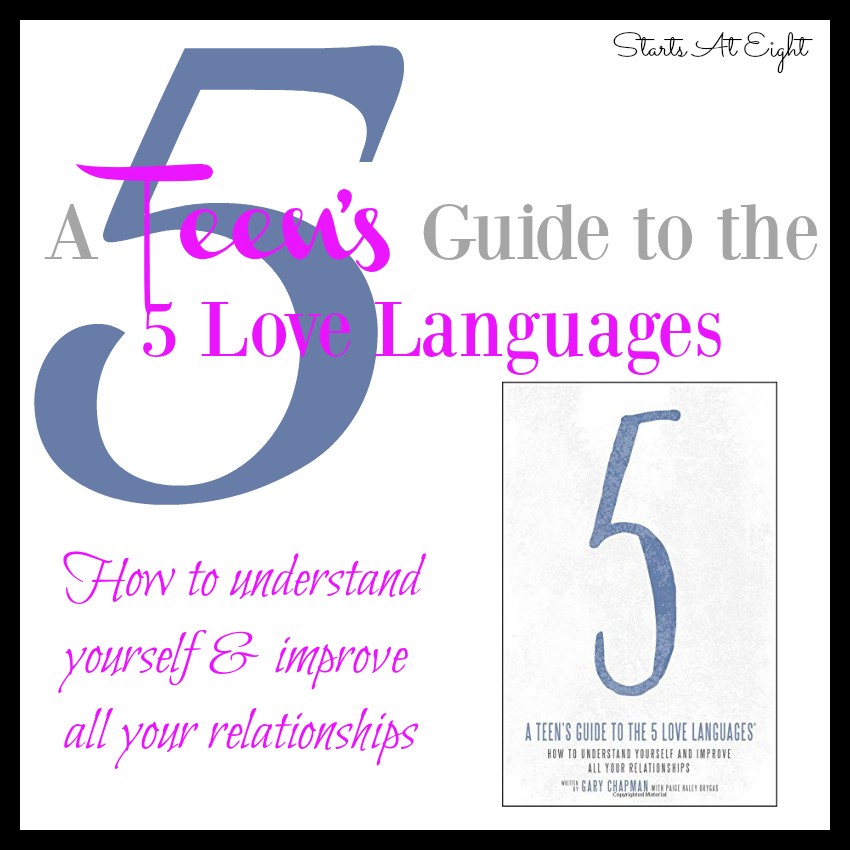Have you ever wondered why some people express love differently than you do? The concept of the 5 Love Languages offers a fascinating framework for understanding how we give and receive love. Applying these principles can significantly enrich your relationships and help you better understand yourself.
The 5 Love Languages, developed by Gary Chapman, propose that individuals express and experience love in one or more of five distinct ways: Words of Affirmation, Acts of Service, Receiving Gifts, Quality Time, and Physical Touch. Recognizing your own love language and those of the people around you can unlock deeper connections and improve communication.
Understanding the 5 Love Languages
Before diving into the teen’s guide, let’s quickly define each of the 5 Love Languages:
-
Words of Affirmation: This involves expressing love through verbal compliments, words of appreciation, and encouragement. If this is your love language, hearing “I love you,” “I appreciate you,” or “You did a great job!” can mean the world.
-
Acts of Service: For those who speak this love language, actions speak louder than words. Helping out with chores, running errands, or doing something to make their life easier is a powerful expression of love.
-
Receiving Gifts: It’s not about the monetary value, but the thought and symbolism behind the gift. A meaningful present shows that someone was thinking of you and cares about your happiness.
-
Quality Time: This love language is all about undivided attention. It means putting away distractions, being present in the moment, and truly connecting with someone.
-
Physical Touch: Expressing and receiving love through physical affection, such as hugs, holding hands, or a pat on the back.
Why a Teen’s Guide is Essential
While the core principles of the 5 Love Languages apply to everyone, a teen’s guide can be especially helpful. Teenagers face unique challenges in navigating relationships, from friendships to romantic connections. A guide tailored to their experiences can provide valuable insights and practical advice.
A Teen’s Guide to the 5 Love Languages is specifically designed to help teens:
- Understand themselves: Discover their primary love language and how they naturally express love.
- Understand others: Recognize the love languages of their friends, family members, and romantic partners.
- Improve communication: Learn how to effectively communicate their needs and appreciate the ways others show love.
- Strengthen relationships: Build stronger, more fulfilling relationships based on mutual understanding and respect.
What Makes This Teen’s Guide Different?
This guide stands out from other books on the 5 Love Languages by:
- Speaking directly to teens: Using language and examples that resonate with their experiences.
- Providing relatable scenarios: Exploring how the love languages manifest in different types of teenage relationships.
- Offering practical advice: Giving concrete tips on how to express love in each language.
- Using engaging visuals: Incorporating graphics and illustrations to make the concepts more accessible and fun.
Discovering Your Love Language
The first step in applying the 5 Love Languages is to identify your own primary love language. Take some time to reflect on what makes you feel most loved and appreciated. Do you feel most valued when someone tells you they appreciate you (Words of Affirmation)? Do you feel loved when someone helps you with a task (Acts of Service)? Or perhaps you feel most connected when someone gives you their undivided attention (Quality Time)?
There are also quizzes and assessments available online and in the book A Teen’s Guide to the 5 Love Languages that can help you pinpoint your primary love language. Understanding your own love language is crucial for communicating your needs to others.
Applying the 5 Love Languages in Your Relationships
Once you know your own love language and have an idea of the love languages of those around you, you can start applying this knowledge to improve your relationships. Here are a few tips:
- Observe and listen: Pay attention to how people express love and what makes them feel valued.
- Ask questions: Don’t be afraid to ask your friends and family members what makes them feel loved.
- Be intentional: Make an effort to speak the love language of the people you care about, even if it’s not your own.
- Be patient: It takes time and effort to learn and apply the 5 Love Languages. Don’t get discouraged if you don’t see results immediately.
- Focus on effort, not perfection: Even small gestures that align with someone’s love language can make a big impact.
Building Stronger Connections
The 5 Love Languages offer a powerful framework for understanding and improving relationships. By learning to speak each other’s love languages, you can build stronger connections, improve communication, and create more fulfilling relationships. Take the time to discover your own love language and those of the people you care about, and watch your relationships flourish.

